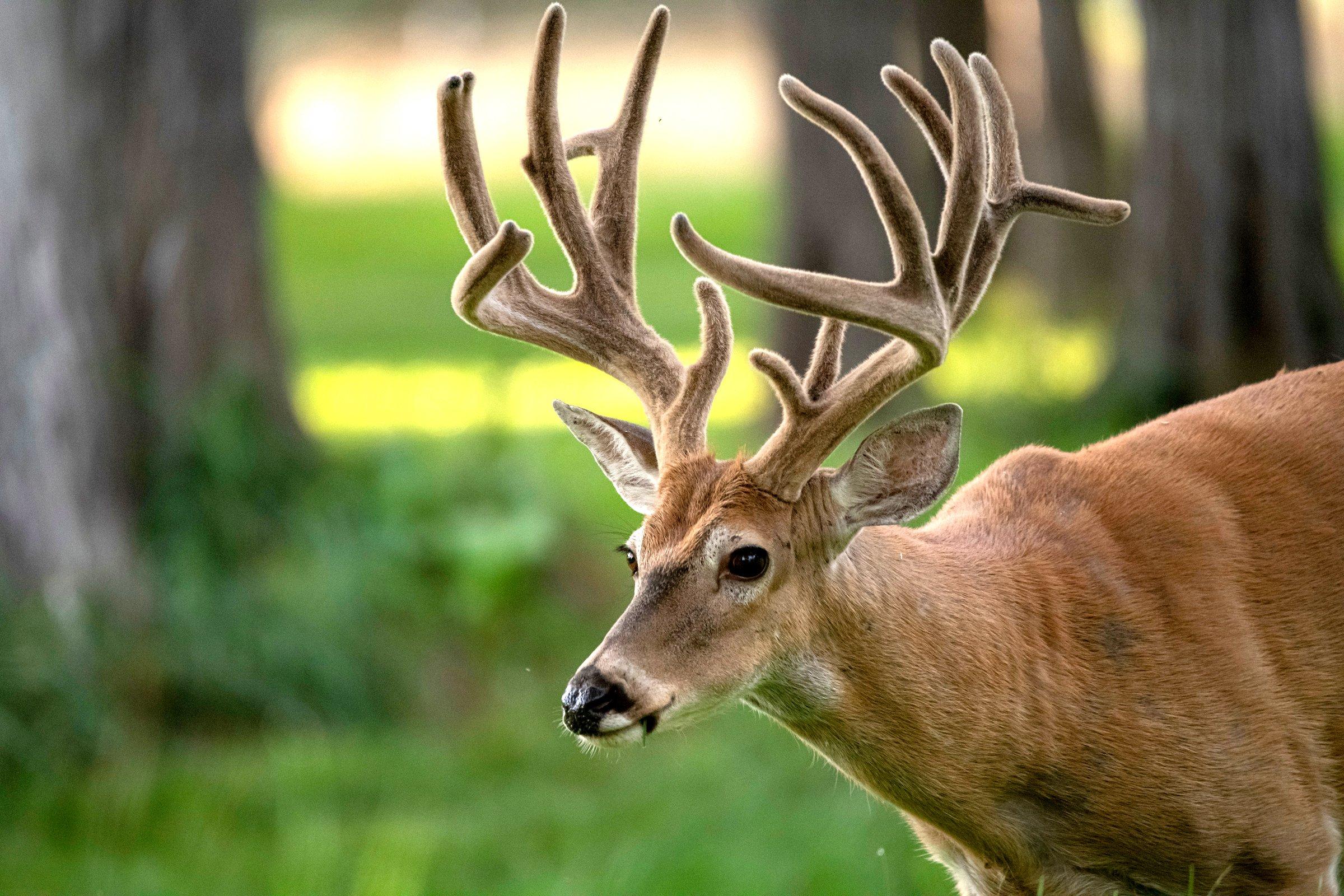Bucks in velvet almost always look larger than they actually are. Here’s why, and how to keep from getting the Big Eye

This is a great, big buck. But it will lose several inches of mass measurement when it sheds velvet. Image by John Hafner
It’s difficult to judge the size of velvet bucks in the field. Deer hunters almost always overestimate velvet antler scores, since mass measurements and tine length of velvet antlers can especially appear greater than that of hard antlers.
Other factors that make judging velvet bucks difficult include:
The velvet seems to be thicker on some deer antlers than others.
It’s easier to overestimate mass toward the end of the growing phase. This is when antlers are nearing their full frame and blood is still present under the velvet. This can make mass measurements appear larger.
Trail cameras can amplify the challenge. Different perspectives can make deer appear larger or smaller than they truly are.
In person, certain perspectives increase difficulty, too. Bucks look larger when their heads are leaned back, or when they’re looking away.
It’s more difficult to estimate a buck’s age in the summer, due to body composition cues that don’t show up until closer to the rut. Still, study a buck’s body as much as you can, and if you have previous trail camera images of a particular buck, try to reflect on that history for a reasonable expectation on antler score.
Very small and very large bucks are the easiest to gauge. It’s the borderline bucks that are most difficult to judge, and frequently look bigger than they actually are.
Despite the challenges, there are numerous things a person can do to improve velvet field-judging skills. This includes using proven tricks and known measurements to understand different antler score aspects. For example, compare the main beam and tine length to certain facial features.
Approximate 7-8 inches separate a buck’s eyes and tip of its nose. The same is true for the base and tip of the ear. Hunters can use these measuring sticks to gauge beam and tine length. Fortunately, if the deer is nearing shed time, velvet shouldn’t really impact tine length. In fact, right before velvet peel, hard antler tips protrude from the velvet.
When the average buck is alert and looking at something (both ears forward), the distance from the outside edge of one ear to the outside edge of another is approximately 16-17 inches. This is an easy measuring stick for antler spread. Like tine length, spread scoring isn’t impacted by velvet. If anything, it will slightly increase (albeit minuscule) when the deer sheds velvet.
The average circumference of a semi-mature buck’s antler beam is about 4 to 4 ½ inches or slightly more, state/region depending. At this measurement, it should be about as wide as the buck’s eyeball, or slightly wider. However, when totaling a buck’s mass measurements, there can be up to 5 inches of total decrease in overall mass scoring when the deer comes out of velvet.
Trail cameras tend to cause score overestimating more than anything else. When studying trail camera photos, implement the following notes:
Use daylight photos to gauge deer, if possible.
Observe reference markers within trail camera photos, including other bucks.
Don’t score a deer with a distorted trail camera photo. Make sure it’s a clear image with true representation.
Use multiple photo angles to reach a conclusion.
Subtract 4-5 inches to account for the loss of mass after velvet shedding.
Additionally, practice putting a measuring tape to harvested velvet bucks. Scoring these deer will show you exactly how big they are. With enough practice, you’ll see how various antler characteristics impact score, which ones are most important, and how certain antler shapes and traits can be deceiving.
Furthermore, study mounts and photos of velvet bucks. Don’t look at or search for the confirmed, verified score of the buck. Instead, observe the rack and guestimate the total gross score. Then, check the true score to see how close you are. If having difficulties, mentally add up (or on paper or with a calculator) each measurement that culminates into a buck’s total score.
Finally, use common sense. Think about each factor, including number of points, mass measurements, tine length, beam length, and inside spread. If a deer isn’t extraordinary in multiple categories, it isn’t likely to be a record-class deer. For example, it isn’t (usually) feasible for an 8-pointer to be 180 inches. That’s a very rare buck, indeed.
Regardless of the specific process, repetition hones this skill. With enough practice, you will be effectively field-judging velvet bucks.
Don’t Miss: SPOOKING A BUNCH OF DEER? STOP HUNTING BEDDING AREAS AND FOOD SOURCES










